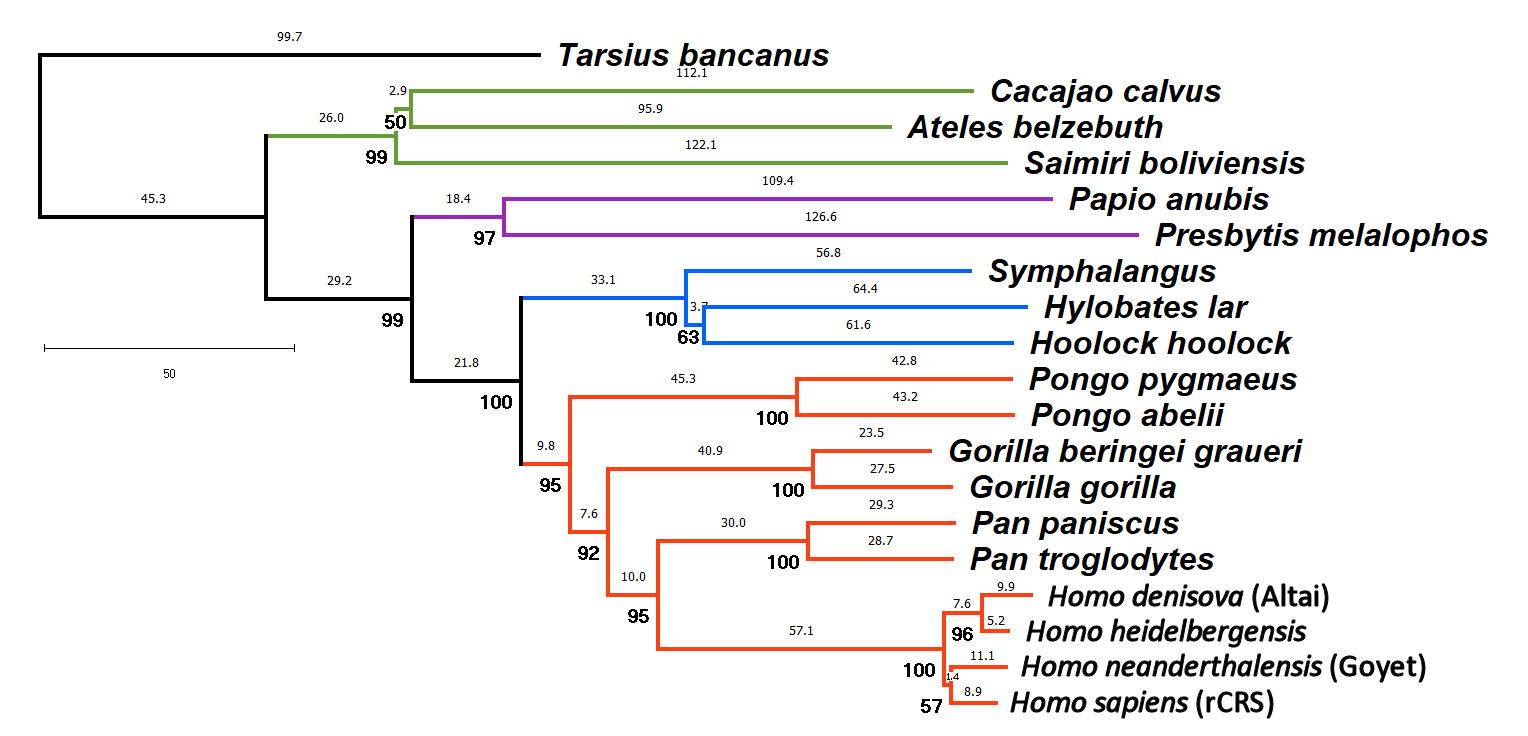
Molecular
phylogeny of Homo and other Primates
All members of the order Primata are characterized by a distinctive skull feature, a complete bony ring around the eye orbits that facilitates binocular vision. The diagram shows the relationships of modern and extinct species of Homo to other living primates, as inferred from the 13 protein-coding genes (~ 12 Kbp) of the mitochondrial DNA (mtDNA) genome.
The evolutionary tree shows the evolutionary relationships of
humans (genus Homo)
relative to the other Great Apes,
the Great Apes relative to the Lesser
Apes, Apes relative to the Old World Monkeys, the
separation of Old and New World
Monkeys, and the relationships of "Simian"
or "monkey-like" primates to Pro-Simian
tarsiers. Another pro-simian group is the Lemurs (not
shown).
In
such trees, degree of evolutionary relationship is
determined by tracing the branching order
back to the Most Recent Common Ancestor (MRCA)
of any group relative to another. Organisms that share a more
recent MRCA are more closely related. The degree
of evolutionary similarity is determined by
counting the number of base changes (Single
Nucleotide Polymorphisms, SNPs) [numbers above
the branches] along the branches connecting any two species. Among the
Great Apes, humans (Homo) are more closely related
to chimps (Pan) than either is to gorillas (Gorilla)
or to orang-utans (Pongo). It also shows that extinct
and modern human species are far more similar to
each other than are different species of chimps, gorillas,
or orang-utans. [Numbers in bold below the branches indicate
the statistical confidence in the relationship,
calculated in a manner to be discussed].
Homework: Prior to the
advent of molecular data in the 1960s, it was assumed that
the large organismal differences between Humans and the
Great Apes were due to accelerated genetic change along the
human lineage. Organismal differences between Chimps and
Gorillas were considered relatively minor. Test this
hypothesis by counting & recording the
number of SNP changes between the six pairwise
combinations of Homo sapiens, Pan troglodytes,
Gorilla gorilla, and Pongo pygmaeus. [For
example, the difference between Homo sapiens and Homo
denisova is 8.9 + 1.4 + 7.6 +
9.9 = 27.5 . Count only horizontal branches].
(1) What is the expected result
if the old hypothesis is correct? Do the
data support or reject the hypothesis? Explain.
(2) Do the data support or reject
the hypothesis that morphologically similar chimps and
gorillas are also more genetically similar to each other
than to humans? Explain
(3) Repeat the calculation for a New
World monkey (Ateles), Old World monkey (Papio),
Lesser Ape (Hylobates), and Neanderthal (Neanderthal).
Are monkeys (with tails) more similar than apes (without
tails)
Analysis & text
material © 2025 by Steven M.
Carr